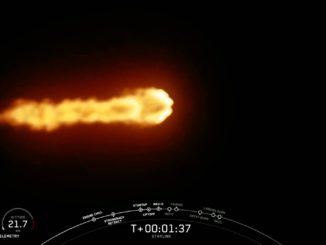
SpaceX took another important step on its road to resuming launches of its Falcon 9 rocket. At the stroke of midnight on Thursday, July 25, it conducted a static fire test of its workhorse launch vehicle.
The burn of the nine Merlin engines at the base of the Falcon 9 booster lasted about 10 seconds in total. The rocket, which was tested at Space Launch Complex 40 (SLC-40) at Cape Canaveral Space Force Station, will likely be the vehicle used for the return to flight mission.
That launch is expected to be the Starlink 10-4 mission, which would send another batch of Starlink satellites to low Earth orbit.
SpaceX’s Falcon 9 was grounded following a liquid oxygen leak on the rocket’s second stage during the Starlink 9-3 mission on July 11. The following Monday, SpaceX requested a public safety determination be made by the Federal Aviation Administration (FAA), arguing that the anomaly didn’t present a risk to public or private property.
As of Wednesday evening, the FAA said it was still evaluating the request and hadn’t made a determination.
“When a public safety determination request is received, the agency evaluates safety-critical systems, the nature and consequences of the anomaly, the adequacy of existing flight safety analysis, safety organization performance, and environmental factors,” the FAA said on July 16. “If the FAA agrees no public safety issues were involved, the operator may return to flight while the investigation remains open, provided all other license requirements are met.”
The resumption of Falcon 9 rockets is important not only for SpaceX and its Starlink internet constellation, but the company has an extensive customer manifest, which includes a pair of astronaut launches coming up as the summer comes to a close.
NASA is preparing to send three of its astronauts and a Russian cosmonaut up to the International Space Station as part of the six-month Crew-9 mission. Meanwhile, the Polaris Program, led by businessman Jared Isaacman, is waiting to launch a roughly five-day, free-flying Dragon mission called “Polaris Dawn.”
It’s unclear how long after the FAA grants SpaceX permission to resume launches that NASA and its partners will approve astronaut flights and other commercial payload launches.



